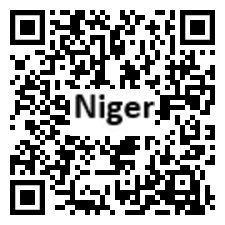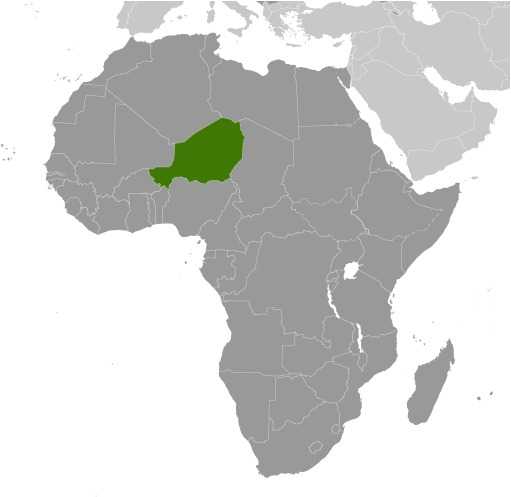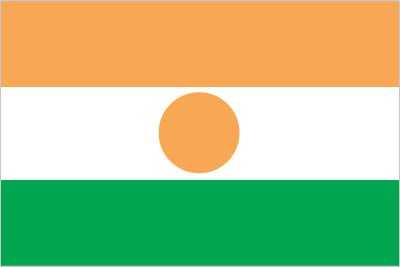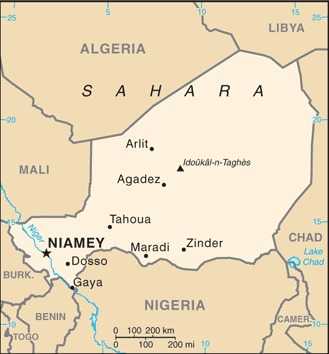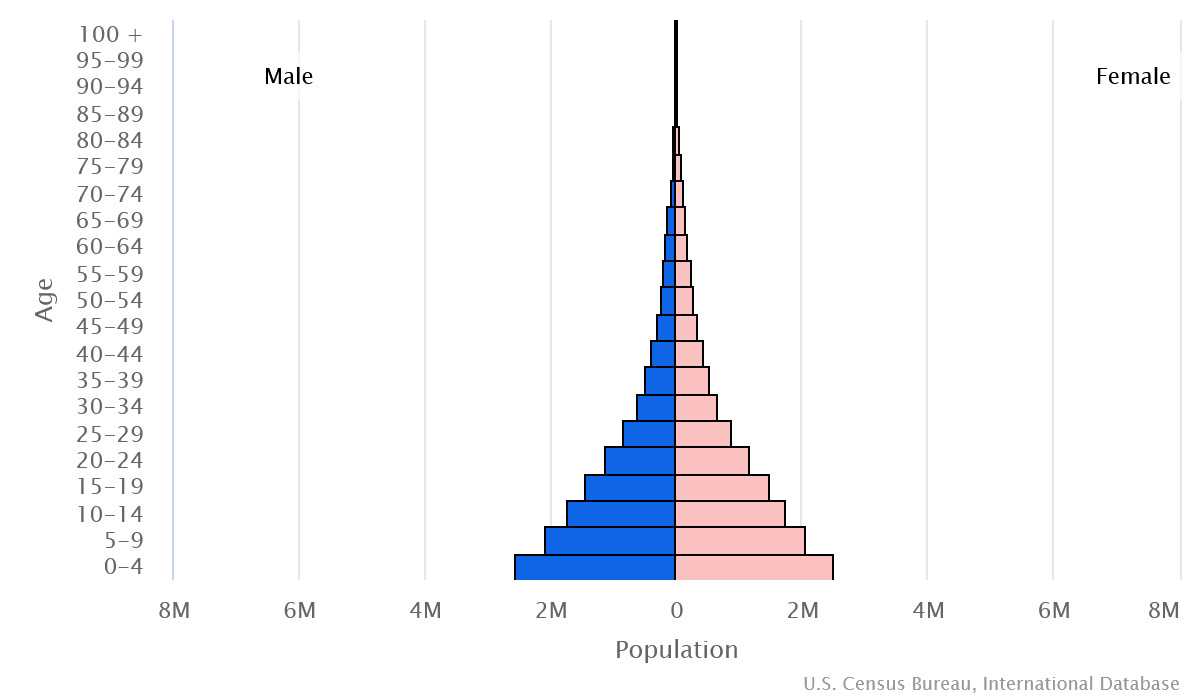Introduction
Background
Niger became independent from France in 1960 and has struggled to maintain a democratic system of government. It is one of the poorest countries in the world with insufficient funds to develop its resource base. The largely agrarian and subsistence-based economy is frequently disrupted by extended droughts common to the Sahel region of Africa.
Geography
Area
total: 1.267 million sq km
land: 1,266,700 sq km
water: 300 sq km
Climate
desert; mostly hot, dry, dusty; tropical in extreme south
Natural resources
uranium, coal, iron ore, tin, phosphates, gold, molybdenum, gypsum, salt, petroleum
People and Society
Population
total: 26,342,784
male: 13,056,203
female: 13,286,581 (2024 est.)
Ethnic groups
Hausa 53.1%, Zarma/Songhai 21.2%, Tuareg 11%, Fulani (Peuhl) 6.5%, Kanuri 5.9%, Gurma 0.8%, Arab 0.4%, Tubu 0.4%, other/unavailable 0.9% (2006 est.)
Languages
Hausa, Zarma, French (official), Fufulde, Tamashek, Kanuri, Gurmancema, Tagdal
note: represents the most-spoken languages; Niger has 10 national languages: Arabic, Buduma, Fulfuldé, Guimancema, Hausa, Kanuri, Sonay-Zarma, Tamajaq, Tassawaq, and Tubu
Religions
Muslim 95.5%, ethnic religionist 4.1%, Christian 0.3%, agnostics and other 0.1% (2020 est.)
Population growth rate
3.66% (2024 est.)
Government
Government type
semi-presidential republic
Capital
name: Niamey
Executive branch
chief of state: President of the National Council for Safeguarding of the Homeland (CNSP) General Abdourahame TIANI (since 28 July 2023); note - deposed president BAZOUM has been under house arrest since a military coup on 26 July 2023
head of government: Prime Minister Ali Mahaman Lamine ZEINE (since 9 August 2023)
Legislative branch
description: the CNSP dissolved the unicameral National Assembly or Assemblee Nationale (171 statutory seats - 166 currently; 158 members directly elected from 8 multi-member constituencies in 7 regions and Niamey by party-list proportional representation, 8 reserved for minorities elected in special single-seat constituencies by simple majority vote, 5 seats reserved for Nigeriens living abroad - l seat per continent - elected in single-seat constituencies by simple majority vote; members serve 5-year terms) as part of the 26 July 2023 military coup
Economy
Economic overview
low-income Sahel economy; major instability and humanitarian crises limit economic activity; COVID-19 eliminated recent antipoverty gains; economy rebounding since December 2020 Nigerian border reopening and new investments; uranium resource rich
Real GDP (purchasing power parity)
$33.406 billion (2022 est.)
$29.963 billion (2021 est.)
$29.554 billion (2020 est.)
Real GDP per capita
$1,300 (2022 est.)
$1,200 (2021 est.)
$1,200 (2020 est.)
Agricultural products
millet, cowpeas, sorghum, onions, milk, groundnuts, sugarcane, cabbages, cassava, potatoes (2022)
Industries
uranium mining, petroleum, cement, brick, soap, textiles, food processing, chemicals, slaughterhouses
Exports
$1.487 billion (2021 est.)
$1.338 billion (2020 est.)
$1.387 billion (2019 est.)
Exports - partners
UAE 69%, France 9%, China 9%, Nigeria 3%, Mali 2% (2022)
Exports - commodities
gold, oil seeds, radioactive chemicals, refined petroleum, uranium and thorium ore (2022)
Imports
$4.027 billion (2021 est.)
$3.542 billion (2020 est.)
$3.395 billion (2019 est.)
Imports - partners
China 22%, France 14%, Nigeria 8%, Germany 5%, UAE 5% (2022)
Imports - commodities
weapons parts and accessories, rice, aircraft, tobacco, iron pipes (2022)
Exchange rates
Communaute Financiere Africaine francs (XOF) per US dollar -
Exchange rates:
623.76 (2022 est.)
554.531 (2021 est.)
575.586 (2020 est.)
585.911 (2019 est.)
555.446 (2018 est.)
Page last updated: Wednesday, May 15, 2024
